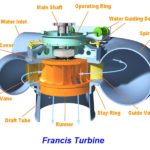When you touch a metal spoon that’s been sitting in a hot cup of tea, you might feel it getting warm. But how does the heat travel from the hot liquid to the other end of the spoon? The answer lies in a process called conduction.
In this blog post, we’ll explore what conduction is, how it works, real-life examples, and its importance in science and everyday life.
Definition: What is Conduction?
Conduction is the process by which heat or electricity is transferred through a substance when there is a difference in temperature or electrical potential, without the movement of the material itself.
It mostly occurs in solids, especially metals, because their particles are closely packed and can easily transfer energy to each other.
How Does Conduction Work?
Conduction works through direct contact. When particles in a hotter region of a material vibrate or move faster, they transfer energy to nearby, cooler particles. This continues throughout the material until the energy is evenly distributed.
There are two main types of conduction:
- Thermal conduction – transfer of heat.
- Electrical conduction – flow of electric charge (electrons).
Thermal Conduction Explained
In thermal conduction, energy moves from the hot part of an object to the cooler part. For example, if one end of a metal rod is heated, the particles at that end gain energy and start vibrating. They bump into nearby particles, passing on their energy, and the heat spreads along the rod.
Factors that affect thermal conduction:
- Material type (metals conduct better than wood or plastic)
- Temperature difference
- Thickness and length of the material
- Cross-sectional area
Electrical Conduction
In electrical conduction, electricity flows due to the movement of electrons. Metals like copper and silver are good electrical conductors because they have free electrons that can move easily.
Insulators like rubber or plastic, on the other hand, don’t allow electricity to pass through easily.
Real-Life Examples of Conduction
Here are some everyday examples that show conduction in action:
- Touching a metal doorknob in winter feels cold – heat leaves your hand and goes into the metal.
- Cooking with a metal pan – the heat from the stove transfers to the pan, then to the food.
- Ironing clothes – heat from the iron is conducted to the fabric.
- Ice cube in hand – your body heat transfers to the ice, causing it to melt.
Applications of Conduction
Conduction plays a vital role in many fields:
- Engineering: Designing heat sinks in electronics to prevent overheating.
- Construction: Insulating homes to reduce heat loss.
- Cooking: Using metals that conduct heat well.
- Electronics: Wiring and circuit boards rely on conductive materials.
Good Conductors vs. Poor Conductors
| Material | Type | Conductivity |
| Copper | Metal | Excellent |
| Aluminum | Metal | Very Good |
| Water | Liquid | Moderate |
| Wood | Solid | Poor |
| Plastic | Solid | Very Poor |
| Glass | Solid | Very Poor |
Conclusion
Conduction is a fundamental process that helps transfer energy through materials, especially solids. From cooking your meals to powering your gadgets, conduction is at work all around you.
Understanding conduction not only helps in science and engineering but also helps us appreciate how energy moves in the world around us.
Did you find this post helpful? Share it with your friends and check out more science explanations on our blog!








